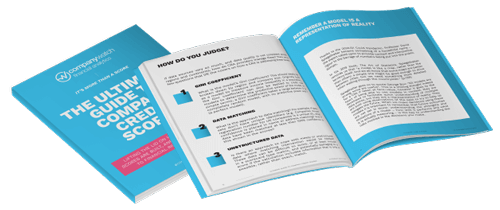Investment: Anthony Bolton, Investing Against the Tide

“For a long time, I’ve used a service called Company Watch to help me keep on top of companies with weak balance sheets. Sometimes it’s obvious that a company is poorly financed but sometimes it’s not. Company Watch calculates an H-Score®, a twenty-first century version of the Z-Score, for each non-financial company it follows.
“To make it possible to predict problems in any company, it compares a large sample of the financial statements of businesses that got into financial difficulties in the past (the ‘failed group’) with those that did not. This enabled Company Watch to build mathematical models that can be applied to any company to determine the extent to which it reveals the characteristics of the failed group. Companies are scored on a financial health rating of 0 to 100 with 100 the strongest. Companies in the lower quartile have sufficient characteristics of failed companies to render them vulnerable. It is very unusual for companies with scores higher than 25 to experience financial distress.
“The models consist of seven key interactive measures, ratios that are treated mathematically and weighted before being combined to produce the single measure, the H-Score®. In support of the H-Score®, each of the seven measures is scored as well, to reveal and evaluate any company’s financial strengths and weaknesses over the past five years. Scores are recalculated every time a company produces financial results.
“The H-Score is one of the inputs I review every time I look at a company. Also, any company in my portfolio that is in the weakest quartile gets my special attention. A bit like technical analysis it’s not that I say I’ll never own a company with a poor chart or poor H-Score® but, if I do, I will want to do so with my eyes fully open and pay special attention to the company’s progress. If something starts to go wrong, these are the holdings that should be sold early, even if this means selling the holding at a loss. Highly geared companies are particularly exposed if business conditions change for the worse. Generally, I will take a smaller holding in these types of company than I would if the balance sheet was stronger. The ones in the lowest decile or so are the most risky of all. Also, I watch very carefully companies that historically had good scores, but which subsequently enter the lowest quartile. I also look out for otherwise strong companies with a steadily declining H-Score® and ones with a very volatile H-Score® history.
“Company Watch sends me a list each fortnight of companies at risk (in the lowest quartile), companies that have entered the at-risk zone and companies no longer at risk. This is one of my essential pieces of regular reading. As a further check, in more highly geared business, it’s worth looking at where the debt trades (if it does trade). I’ve sometimes seen businesses where equity investors are quite cheery about the company when debt investors are paying a big discount on the debt. I would rather take my steer from the debt investors (if the debt is not worth near par, the equity may be worth very little). It’s also worth looking at credit default spreads where these exist for similar reasons.
“Of course, most companies use debt and debt is not normally bad news. Companies that use debt sensibly can increase returns substantially for equity investors. Others have inefficient balance sheets today, and here shareholders should be asking for more debt. If I had my time again in running my funds and had avoided every share with a bottom quartile sector H-Score® I might have missed a few winners, but I believe I would have avoided most of my disasters.”
Extracts from: Anthony Bolton, Investing Against the Tide
Edinburgh: Pearson Education Limited, 2009 © Anthony Bolton, 2009

